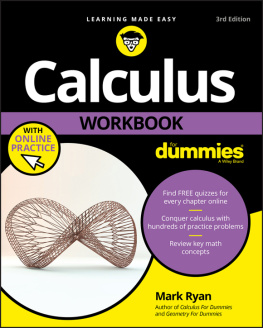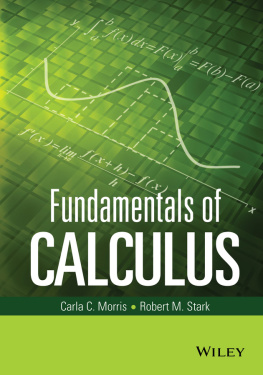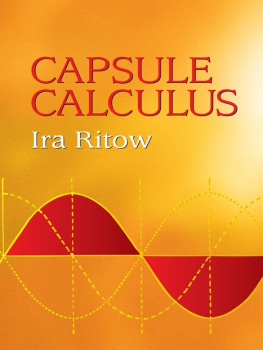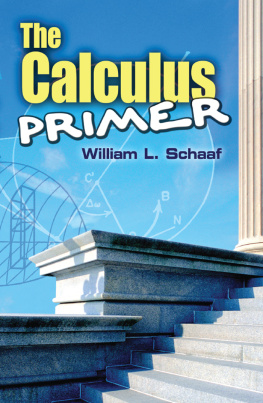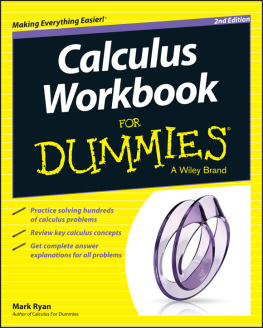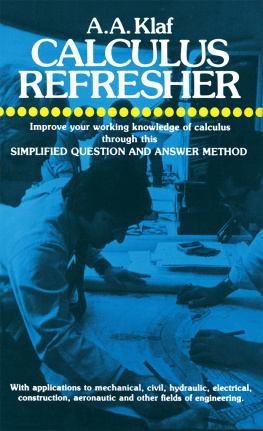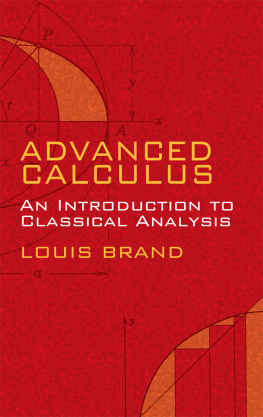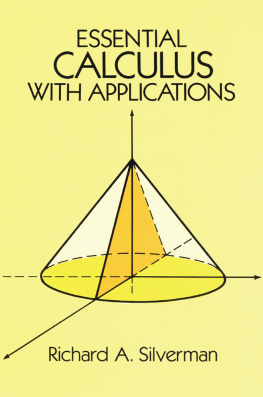Two-Dimensional Calculus Two-Dimensional Calculus Robert Osserman Stanford University Dover Publications, Inc
Mineola, New York Copyright Copyright 1968, 1996 by Robert Osserman
All rights reserved. Bibliographical Note This Dover edition, first published in 2011, is an unabridged republication of the work originally published in 1968 by Harcourt, Brace & World, Inc., New York. Library of Congress Cataloging-in-Publication Data Osserman, Robert Two-Dimensional Calculus / Robert Osserman. p. cm. Originally published: New York : Harcourt, Brace & World, 1968 Includes bibliographical references and index.
Summary: :Two-dimensional calculus is vital to the mastery of the broader field, and this text presents an extensive treatment of this crucial subject. The books advantages include the thorough integration of linear algebra and materials that aid the development of readers geometric intuition. Problem sets appear at the end of each chapter, many of them with answers. 1968 editionProvided by publisher. eISBN-13: 978-0-4863-2100-4 1. Mathematics, Calculus.
QA303 .086 2011 515dc22 2010052841 Manufactured in the United States by Courier Corporation
48163801
www.doverpublications.com Preface to Reprint Edition The preface to the first edition of this book in 1968 describes the advantages of a thorough discussion of the two-dimensional case of multi-variable calculus over the more conventional treatments. Among those advantages are the ease of incorporating linear algebra, and the possibility of geometric visualization. The principal change in the standard undergraduate curriculum since that time is the increasingly widespread and early introduction of linear algebra. As a result, it is much more common now for students to approach advanced calculus with the algebraic background needed to insure a deeper understanding of the material. On the other hand, what is still generally missing is the intuitive and geometric insight into both the algebra and the calculus. A principal goal of this book is to assist its readers in achieving that insight.
Some instructors may feel that by starting with the twodimensional case, a student will have a much easier time approaching the subject in three and higher dimensions. Others may prefer to start with the general case, and refer back periodically to the more accessible description in two dimensions. In either case, twodimensional calculus remains the most basic component of several-variable calculus, without which no student can acquire a mastery of the subject. ROBERT OSSERMAN Preface In 1958 there appeared a treatment of advanced calculus by Nickerson, Spencer, and Steenrod. In their preface they observed that the standard treatises on this subject, at any rate those available in English, tend to be omnibus collections of seemingly unrelated topics. The presentation of vector analysis often degenerates! into a list of formulas and manipulative exercises, and the student is not brought to grips with the underlying mathematical ideas.
This view of the situation was widely shared by those who were familiar with the available textbooks. The most important parts of the subject were often obscured in a jumble of disconnected topics. In particular, the theory of functions of several variables, which is a clearly delineated unit, was frequently scattered piecemeal among other topics in elementary and advanced calculus. There were several reasons for this disorder. To some degree it can be ascribed to historical accident in the development of the undergraduate mathematics curriculum. But more fundamentally, it stems from certain inherent difficulties.
The main problem is that without a knowledge of linear algebra it is possible to attain a purely manipulative mastery of the subject, but no real understanding. On a more elementary level, it is possible to discuss functions of several variables without using vector methods, but many important insights will be missed. The solution proposed by Nickerson, Spencer, and Steenrod, and since adopted by a number of others, was to present first a full-scale treatment of linear algebra, and then to use it freely in their development of higher-dimensional calculus. This approach certainly solves some of the basic problems, but it also creates others. This text presents an alternative approach. The decision to restrict the entire discussion to two variables was based on several considerations, the most important of which are: 1.
The basic problem concerning linear algebra is easily solved. The subjects of quadratic forms and linear transformations in two dimensions are presented in a relatively few pages. They appear as a natural part of the general theory of differentiable functions and transformations and are then used to give further insight into that theory. 2. Geometric intuition operates as a powerful aid to understanding the fundamental concepts, and it also casts light on the reasons for introducing those concepts. Geometric visualization is clearest in two dimensions, still possible in three dimensions, and absent in higher dimensions.
Indeed, the later development of geometric insight in n dimensions depends on a thorough familiarity with the lower-dimensional models. 3. The conceptual understanding acquired in the two-dimensional case allows the student to move rapidly through the higher dimensional cases, distinguishing the underlying ideas from the technical complications which arise in the transition from two to higher dimensions. 4. A thorough familiarity with two-dimensional calculus is an ideal preparation for the theory of functions of a complex variable. Indeed, complex functions are interpreted geometrically as plane transformations.
Chapter Three of this book concentrates on the ability to visualize these transformations and to work with them effectively. 5. The unity achieved by detaching functions of several variables from the rest of advanced calculus is further consolidated by the elimination of dimension hopping. Unless the student is ready for a general treatment of n-dimensional calculus, he is probably more confused than edified by the usual proliferation of casesone function of three variables, two functions of four variables, etc. It should be made clear that the idea of a unified presentation of two-dimensional calculus is certainly not original with the author. Just such a course has been given for a number of years at Stanford.
Experience has shown that a student is then prepared to go very rapidly through the classical treatment of three-dimensional calculus, or else to go directly to the general n-dimensional case if his over-all mathematical level is sufficiently advanced. There are a number of good treatments available for each of these alternatives. (See the list of references on page 430.) The two-dimensional aspect of this book should be viewed in perspective as subsidiary to the principal goala presentation of the fundamental ideas that distinguish several-variable from one-variable calculus. It is the clearest possible exposition of these underlying ideas, and wherever relevant their geometric or physical content, that has motivated the selection of topics, their order, and the accompanying examples. Another, and related goal, is a treatment that is sufficiently elementary to be accessible to a student with a minimum of preparation, but sufficiently rich in insights to be stimulating for a more advanced student who may have seen some of the topics presented, perhaps in a more superficial way, as part of a basic course in calculus. The prerequisite for reading this book is a knowledge of elementary one-variable calculus.
Karel de Leeuws Calculus, which precedes this book in the Harbrace College Mathematics Series, is an excellent, concise treatment of all that is needed in the way of preparation. Since some students will have had more extensive training in elementary calculus, this book is designed so that it may be used at various levels. For a brief introduction to functions of several variables, it would suffice to cover the material in the first two chapters, together with selected sections in . The first few exercises at the end of each section are generally of a more routine nature, and may be used to provide a check on elementary comprehension of the text. For students who already have some familiarity with the background material in , the main body of the text could be completed in a standard course, lasting roughly one semester. Finally, those students who may have been previously exposed to some version of several-variable calculus, and who wish to deepen their understanding, will find in addition to the topics discussed in the main text, a large number of applications and elaborations in the exercise sections.
Next page


